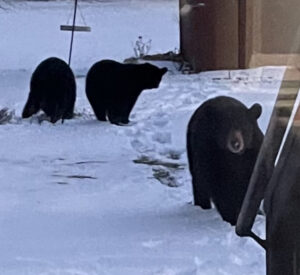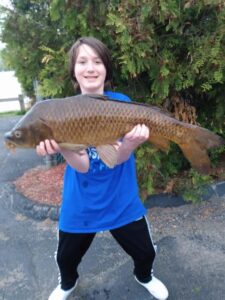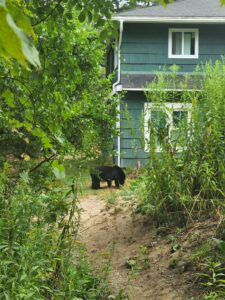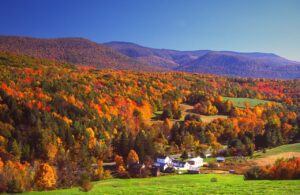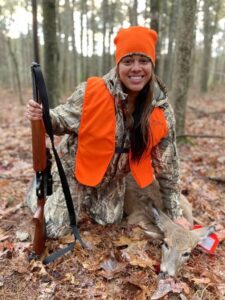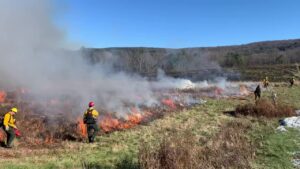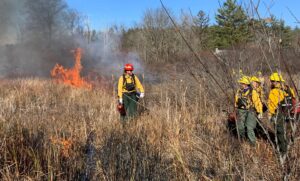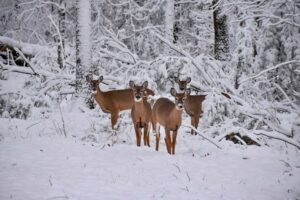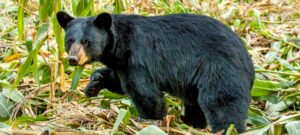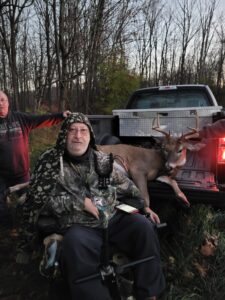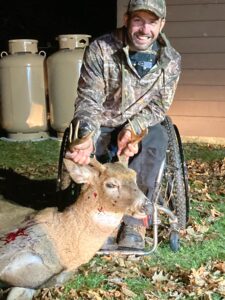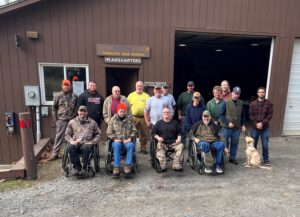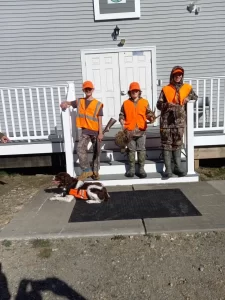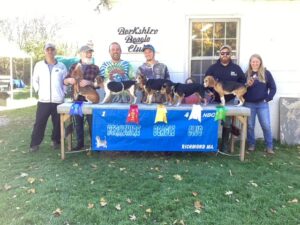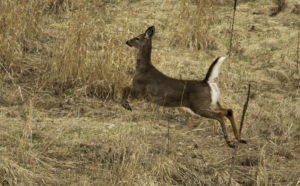In my December 10, 2022 column, I did an article on MassWildlife’s Hunters Share the Harvest Program, a new program which provides an opportunity for hunters to donate and share wild game meat like venison with Massachusetts residents in need.
Free range, organic venison is a lean, healthy protein with a low carbon footprint that already feeds thousands of licensed hunters and their families across Massachusetts each year and now successful hunters can help combat hunger and food insecurity in their communities by donating venison.
In last year’s deer hunting seasons, there was only one approved meat processor that accepted whole-deer donations. The packaged venison was to be distributed to those in need through the Massachusetts Military Support Foundation’s Food 4 Vets program.
Meat processors, food pantries, hunger relief agencies, or other organizations who wanted to participate in MassWildlife’s Hunters Share the Harvest program in the future could contact Martin Feehan, MassWildlife’s Deer and Moose Project Leader, at martin.feehan@mass.gov.
Well, at last week’s Berkshire County League of Sportsmen’s (BCLS) meeting, DFW Western District Supervisor Andrew Madden reported that MassWildlife had a very successful launch of the Share the Harvest Program. “With support from the Massachusetts Outdoor Heritage Foundation and through the generosity of hunters, more than 700lbs of venison were distributed.” said Madden.
MassWildlife will be expanding the program in 2023 to reach wider distribution and provide meals for more people throughout the state.
BioMap is available.
BioMap, a newly-updated online tool that identifies critical land and waterways throughout the Commonwealth in need of conservation is now available. MassWildlife and The Nature Conservancy (TNC) worked to develop the tool to help state and local governments, land trusts, non-government organizations, and other conservation partners strategically plan projects to conserve wildlife and their habitats.
The latest version of BioMap combines more than 40 years of rigorously documented rare species and natural community records from MassWildlife with cutting-edge climate resilience data from TNC and spatial data identifying intact fish and wildlife communities, habitats, and ecosystems that are the focus of the Massachusetts State Wildlife Action Plan.
You are invited to join Assistant Director of MassWildlife’s Natural Heritage and Endangered Species Program Eve Schluter and TNC Ecologist Andy Finton for a demonstration of the new BioMap webinar on January 18 at 7:00 p.m. on Zoom. Click onto https://www.mass.gov/news/new-release-of-biomap to register for the webinar.
Email natural.heritage@mass.gov to request BioMap technical support or to request notification of future trainings.
“Tracking Wildlife: Stories from the More-Than-Human World”
Skilled wildlife tracker and educator Dan Gardoqui is visiting the Berkshires to present a talk: “Tracking Wildlife: Stories from the More-Than-Human World” at Berkshire Community College’s Robert Boland Theater in Pittsfield on Friday, January 20 at 6:00 PM. This event is sponsored by Berkshire Environmental Action Team (BEAT), Greenagers, Berkshire Natural Resources Council (BNRC), Housatonic Heritage, Richmond Pond Association, and Berkshire Community College. It is free and open to the public, with a $10 suggested donation.
Dan Gardoqui will give a presentation on tracking wildlife. He’ll lead attendees to make deeper connections with the natural world and the wildlife that surrounds us by sharing thrilling stories and photos from his tracking experiences and discussing ways to actively participate in the more-than-human world by applying wildlife tracking skills. A Q & A session will follow the talk.
The following day, Saturday, January 21, Dan will lead two back-to-back trackings (8:30 am to 11:30 am and 12:30pm to 3:30pm at the Eugene D Moran Wildlife Management Area on the border of Cheshire and Windsor, MA. Each workshop costs $50 and has a limited space of 10 participants Email team@thebeatnews.org with any questions.
For over 30 years, Dan Gardoqui has been a student, teacher, observer, and active participant in the more-than-human world. A Certified Wildlife Tracker since 2006, he has trained hundreds in the science and art of tracking. Dan is also a bird language expert and bird mimic – known for his YouTube series “Learn a Bird.” Some of his contributions include the books “Mammal Tracks & Sign: A Guide to North American Species” (Elbroch & MacFarland) and “What the Robin Knows: How Birds Reveal Nature’s Secrets” (Young). Dan applies wildlife tracking skills in citizen science projects (e.g., Canada Lynx, Flying Squirrels, Moose, Eastern Wolf) as a Registered Maine Guide.
Fly fishing show in Marlboro
The 2023 Fly Fishing Show will take place January 20-22 at the Royal Plaza Trade Center,181 Boston Post Road Marlborough, MA. Hours are 10 am to 6 pm on Friday, 9 am to 5:30 pm on Saturday and 9 am to 4:30 pm on Sunday. The show promises more fly-casting, tying, manufacturer and retail store displays of the newest rods, reels, lines, boots, waders, clothing and flies during the three-day run.
The show will have many demonstrations at its Destination Theater presentations each hour including Labrador’s Monster Brookies, Fly Fishing Martha’s Vineyard, Montana, Iceland, the Adirondacks and many others. There will be more than $30,000 in door prizes.
Admission is $15 for one day, $25 for two days and $35 for three days. Children under age 5 are free, children 6-12 are $5 and active military with ID’s are $10.
Fly Fishers International hosts the Fly-Fishing Show Learning Center with fly tying, casting instruction and other fly-fishing information and is free to show attendees.
The New England premiere of the 2023 International Fly-Fishing Film Festival is Friday at 6:30 pm. Tickets are $10 in advance or $15 at the door.
For a complete listing of fly-fishing films, classes, seminars, door prizes, demonstrations, etc., visit www. flyfishingshow.com or phone (814) 443-3638.
Beginner Snowshoe/Winter Hike
On Saturday, January 21 from 10:00 am to 12:00 pm BEAT and the Great Barrington Land Conservancy are having a 1-mile beginner winter hike at BNRC’s Housatonic Flats reserve on Stockbridge Road, Great Barrington. If weather permits, they’ll snowshoe, if there’s no snow, they’ll go for a winter hike. They will review the basics of winter hiking like what traction to wear on your feet, how to layer properly, and what to look for.
It will be an easy hike of 0.9 miles. Bring water, wear sturdy footwear and wear layers. BNRC has a few pairs of micro-spikes and snowshoes to loan. Animals not allowed. For questions contact Charlotte at chood@bnrc.org
Fishing community mourns the loss of Fred Moran
Frederick Dennis Moran of Adams passed beyond the riverbend on January 8 at the age of 80. He undoubtedly will be remembered by former students from the Lenox, Cheshire and Dalton schools. He completed his last years as a classroom teacher at the Craneville Elementary School in Dalton.
Perhaps more people will remember Fred as an avid fly fisherman who ran Points North Outfitters in Adams. For two decades Fred and his wife Marilyn taught hundreds how to fly fish and they guided hundreds more on the Deerfield River. Fred was known for collecting antique (bamboo) fishing rods and reels and the building and restoration of fly-fishing rods. He later worked at the Orvis fly rod factory in Manchester, VT. He was a close friend of the legendary local bamboo rod builder, Francis “Digger” Degere and became his apprentice.
Fred was an esteemed member of the Taconic Chapter of Trout Unlimited where he and Digger put on rod building demonstrations. Fred and Marilyn were recipients of TU’s Crooked Staff Award, the highest honor that the chapter bestows. He was also a director of the Hoosic River Watershed Association.
Fred was a good friend. The last time I saw him was when we did some flyfishing one day at the Alford Brook Club in August of 2020. It was such a wonderful day that I did an article about it in this column. (Google Gene Chague-Fred Moran to read the Berkshire Eagle article). Boy, could he cast a fly!
Fred’s son Kevin (Berkshire Eagle Executive Editor) emailed me about his dad’s death and included these words, “I figured maybe some of his fishing buddies would imagine him casting a fly out there on heaven’s river, which is one way he’d like to be remembered, I’m sure. I suspect that Digger Degere is waiting for him there, and probably has the flies already picked out and ready to give to dad.”
Our condolences go out to Marilyn, Kevin and his entire family. He will never be forgotten.

